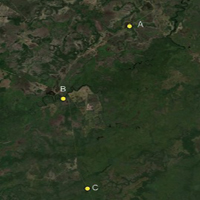Ecological characterization of mosquitoes (Diptera: Culicidae) in areas of the Mato Grosso Pantanal, Mato Grosso State, Brazil

Submitted: 13 January 2021
Accepted: 1 June 2021
Published: 4 August 2021
Accepted: 1 June 2021
Abstract Views: 1539
PDF: 560
HTML: 14
HTML: 14
Publisher's note
All claims expressed in this article are solely those of the authors and do not necessarily represent those of their affiliated organizations, or those of the publisher, the editors and the reviewers. Any product that may be evaluated in this article or claim that may be made by its manufacturer is not guaranteed or endorsed by the publisher.
All claims expressed in this article are solely those of the authors and do not necessarily represent those of their affiliated organizations, or those of the publisher, the editors and the reviewers. Any product that may be evaluated in this article or claim that may be made by its manufacturer is not guaranteed or endorsed by the publisher.


 https://doi.org/10.4081/tz.2021.84
https://doi.org/10.4081/tz.2021.84



